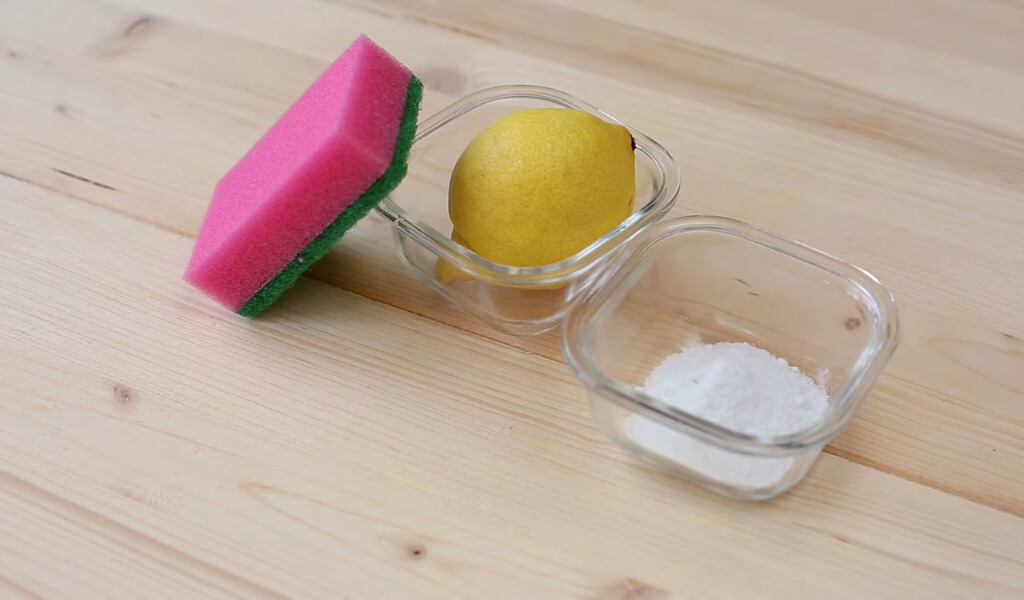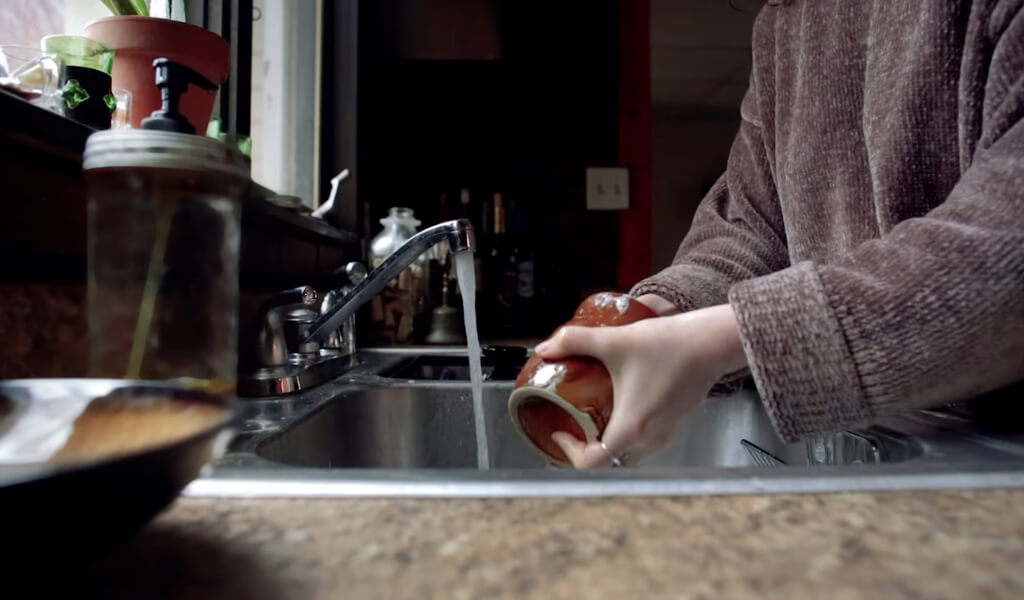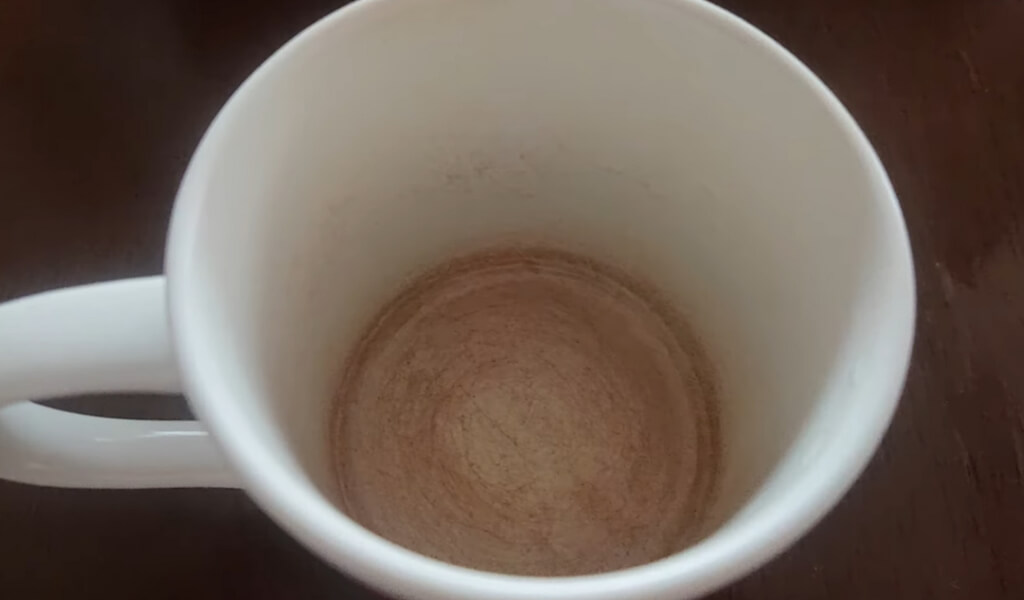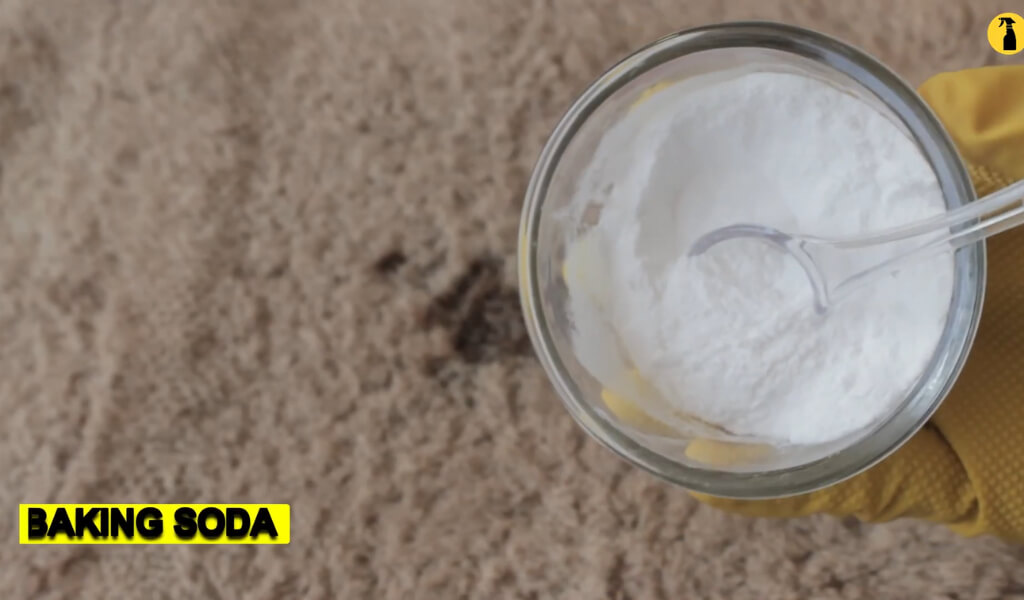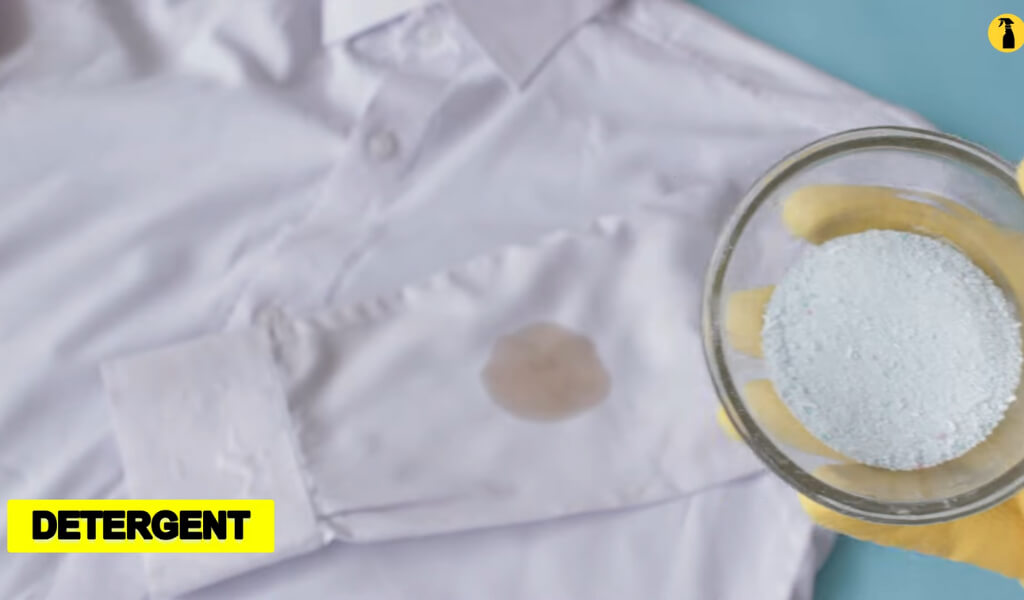“How to remove tea stains” has crossed my mind more than I can count.
As someone who treasures each cup of tea, I know all too well the downsides that come with it – those stubborn stains. They find their way onto our favourite mugs, clothes, carpets, and teeth.
But there’s no need to fret. In this article, I will share practical, easy-to-follow solutions that fit our everyday lives. We’ll turn this common issue into a minor hiccup on our tea-drinking journey.
Read More: Top 8 Best Teapots 2023 – Actual Tests And Detailed Reviews
Why should you remove tea stains as soon as possible?
Before we dive into specific techniques, I want to stress the importance of swift action when it comes to tea stains. Like any spill, tea begins to seep into the fabric, carpet fibres, or porous ceramic surfaces the moment it contacts. The longer we wait, the harder it becomes to lift the stain completely.
Addressing stains promptly is the golden rule in stain removal, and it applies equally to our friend, the tea stain.
This doesn’t mean that old tea stains are a lost cause – far from it. It’s just that fresh stains have yet to have the time to set into the material, be it cotton, wool, porcelain, or enamel. They’re less embedded and often easier to deal with.
How to remove Tea stains from Cups
To remove coffee or tea stains, apply approximately 1 tsp. Mix Baking Soda onto the stain with a small amount of water to create a paste. Use a damp, soft sponge to gently scrub the stain. The mild abrasiveness of baking soda aids in lifting the stains from the surface.
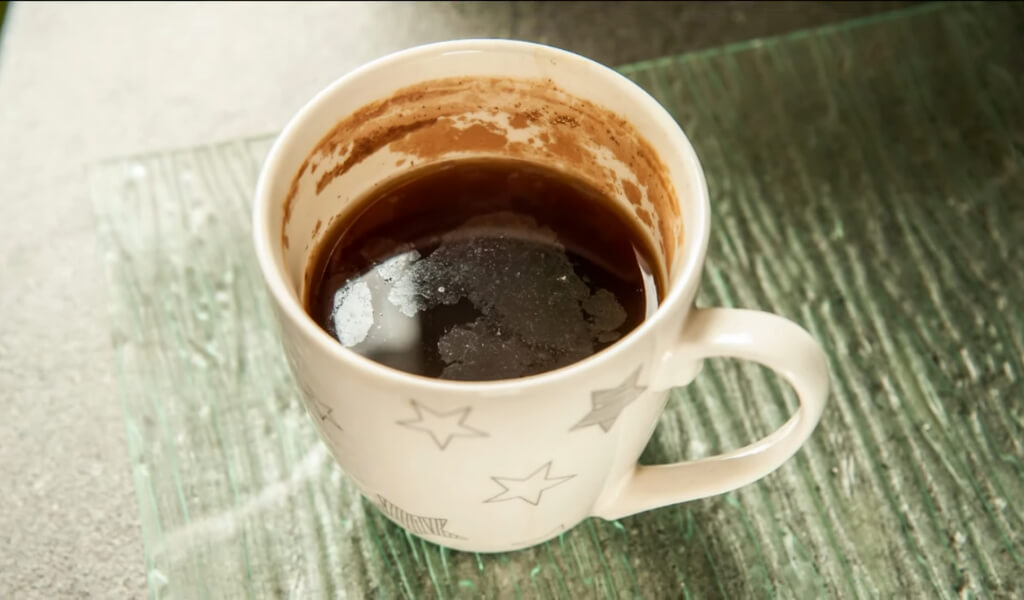
Here’s how you can reclaim the pristine look of your favorite tea vessels.
1. The Soap Soak and Scrub
Imagine enjoying a warm Earl Grey in your cherished ceramic mug, only to find a tea stain grinning. This method is your first line of defence.
Here’s what you do: squirt some of your regular dish soap into the mug, add enough warm water to cover the stain, and give it a good wiggle.
Let it sit for a few minutes – take this time to savour the last sips of your tea. The soap is doing its job, working on that stubborn stain. After the brief pause, arm yourself with a sponge and scrub away.
2. The Baking Soda Scrub
Say your favourite stainless steel travel mug has fallen victim to a tea stain. For this, the power of baking soda comes to the rescue. Sprinkle about a teaspoon of baking soda on the stain. Add a little water to make a paste.
With a damp, soft sponge, scrub away at the stain. With its gentle yet abrasive nature, baking soda lifts the tea stain from the surface. After scrubbing, rinse the mug to remove any leftover baking soda.
3. The Vinegar Soak and Scrub
Distilled White Vinegar can be your ally if you’re dealing with a particularly tough stain. Fill the stained mug halfway with vinegar, then top up with very hot water. Let it sit for at least 10 minutes – enough time to catch up on your favorite book. The vinegar needs this time to break down the stain. After soaking, scrub with dish soap and a soft sponge, then rinse.
Remember, prevention is as important as cure. Remember to rinse your cups and mugs immediately after your tea time. A quick rinse can go a long way in keeping those pesky stains at bay.
How to Remove Tea Stains from Carpets
Spilling tea on your carpet can be a nightmare, but don’t worry! You can remove tea stains from carpets, both fresh and old, with patience and the right steps.
Professional carpet cleaning might be a viable option for stubborn stains, but let’s first explore some at-home solutions you can try.
How to Remove Fresh Tea Stains from Carpets
First, blot up the tea stain as much as possible using a clean white cloth. Keep blotting until no more liquid gets transferred onto the cloth and the area feels almost dry.
Next, dilute the stain by pouring water onto it and continue blotting. Keep repeating this until the cloth shows no signs of the stain and the area feels almost dry.
Now, apply a carpet stain remover as per the product directions. Once you’ve treated the stain, let the carpet air dry. After drying, vacuum the area to lift the carpet fibres and remove any trace of the stain removal process.
How to Deal with Stubborn or Old Tea Stains on Carpets:
If you still see traces of the tea stain after the previous steps, or if you are dealing with an old tea stain, it’s time to bring out the white vinegar. Here’s how to remove stubborn tea stains.
Mix equal parts white vinegar and water, apply to the stain, wait 5-10 minutes, rinse with cold water, blot with a clean cloth until nearly dry, air dry, and vacuum to lift carpet fibers. Test vinegar on hidden spot first as it may bleach the carpet. If the tea stain remains, consider professional carpet cleaning for the best results in preserving your carpet’s appearance and texture.
Note: A spill isn’t the end of the world – or your carpet. It’s all about acting fast and using the right methods. Keep reading as we’re about to delve into removing tea stains from different types of clothing.
How to Remove Tea Stains from Clothes
To summarize, rinse the stain with cold water, turn the clothing item inside out, apply detergent, wait for five minutes, use baking soda and a stain remover, and repeat if necessary.
Here’s a detailed guide on removing fresh and old tea stains from various types of clothing, along with specific tips for different fabrics.
Read More:
Using Vinegar
Apply it directly to the wet tea stain on your clothing. Let the vinegar soak for 30 minutes to dissolve the stain, then rinse the clothing piece again. Once the stain is gone, launder as usual.
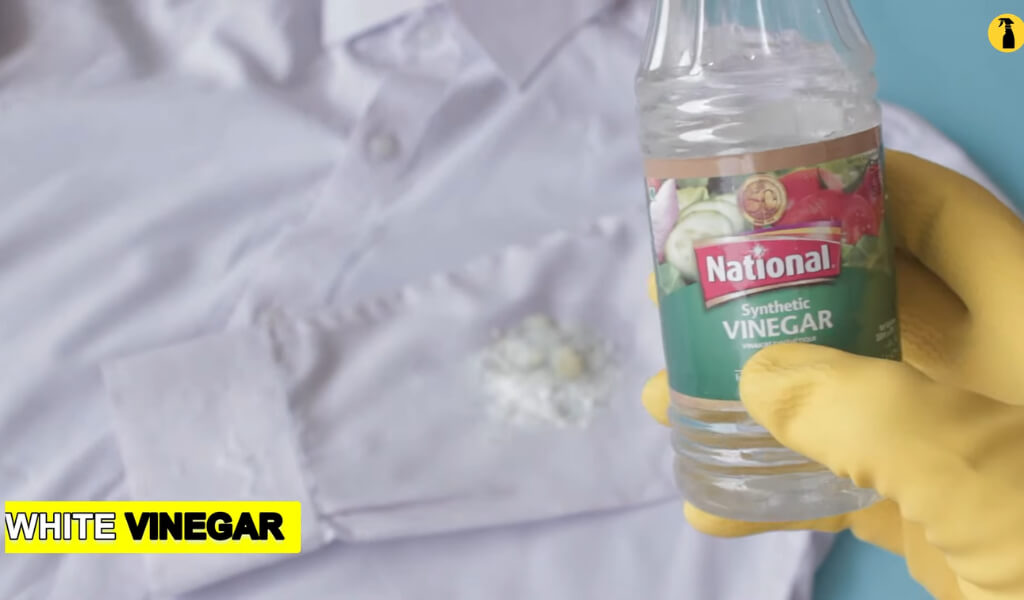
Use Baking Soda
While the stain is still wet, apply a thick layer of baking soda directly to it. The baking soda absorbs any remaining tea, drawing the colour from the clothing and into the powder. Leave it overnight, then scrape off the powder. You should see a significant reduction in the stain.
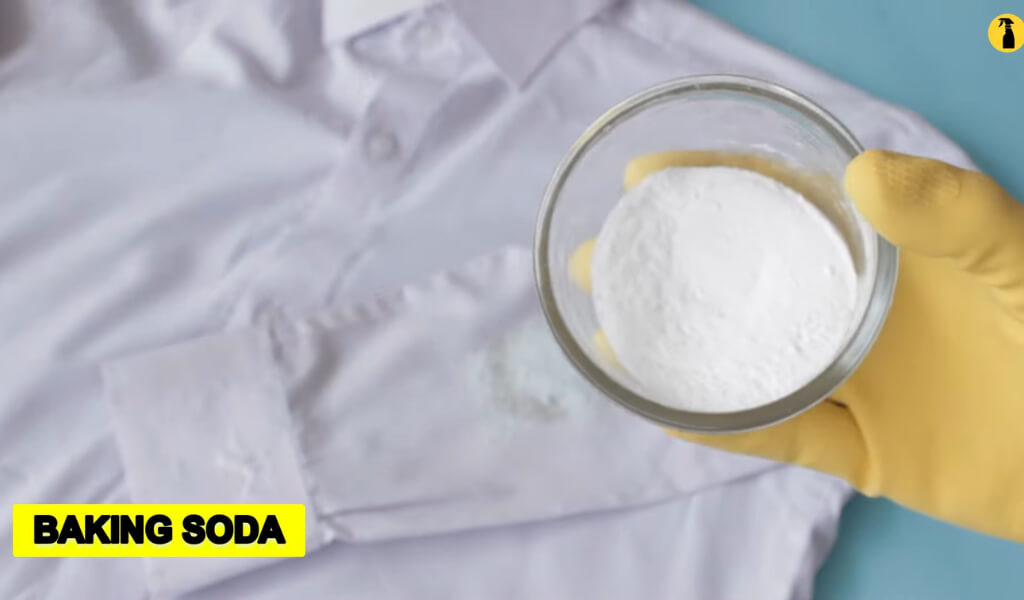
Use an Oxidizing
You can rely on an oxidising stain remover like OxiClean for stubborn stains. Soak the stained clothing in a solution of the stain remover and cold water, following the directions on the product label.
Use Lemon Juice and Boiling Water for White Clothes
Add lemon juice to the stain on white clothes and let it sit for 15 minutes. Then use the boiling water method, which is particularly effective if the fabric can withstand hot water. Secure the stained fabric tightly with a rubber band over a bowl or mug, ensuring the stained area is in the middle. Carefully pour boiling water through the spot from about 6 inches above. This process flushes out the stain. But be careful not to burn yourself!
Keep in mind, different fabrics need different care, so check the label before tackling stains. And don’t forget to be patient – some stains may need multiple treatments, but persistence will restore your favorite clothes
Read More:
How to remove tea stains from teeth
To get rid of tea stains on your teeth, floss and brush twice daily with a specialized toothpaste, but be cautious as it may harm your enamel. Consider dental polishing treatments before teeth whitening for a more effective solution.
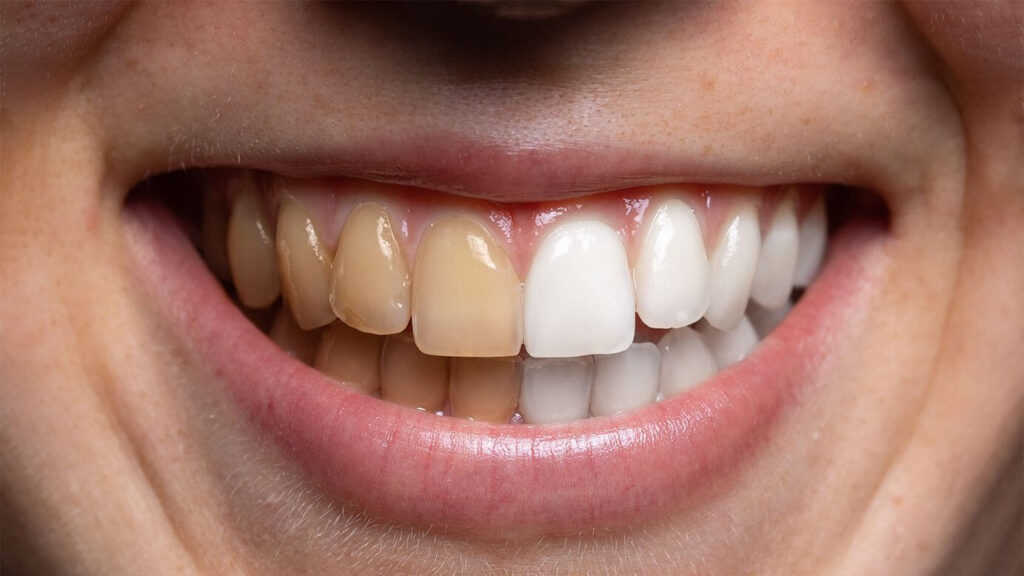
For a short while, I even tried using stain-removal toothpaste. It worked quite well in lifting the stains, but remember, it’s a temporary solution. These pastes can be coarse and may damage tooth enamel over time.
Additionally, I incorporated more natural abrasive foods into my diet. Foods like apples, carrots, and celery can work wonders in scrubbing tea stains from your teeth. Think of them as nature’s toothbrushes!
Moreover, did you know that dental polishing treatments can remove tea stains? These treatments can prepare your teeth for whitening. But don’t worry, this is typically a last resort and only something you’ll need if the stains are stubborn.
Tips for Prevention and Regular Care for Tea Drinkers:
How about avoiding stains from the start? I found rinsing my mouth with water after having dark tea helped. I also discovered a handy trick: sip all non-water beverages through a straw to keep them from touching your teeth. And let me tell you, sipping iced tea through a straw on a hot day is delightful!
In the end, the best approach is a preventative one. Sticking to a consistent oral hygiene routine, eating abrasive foods, and using smart techniques like drinking through a straw can keep your pearly whites white!
Read More:
Ways to Remove Tea Stains from Plastics (Teapots, Pitchers, etc.)
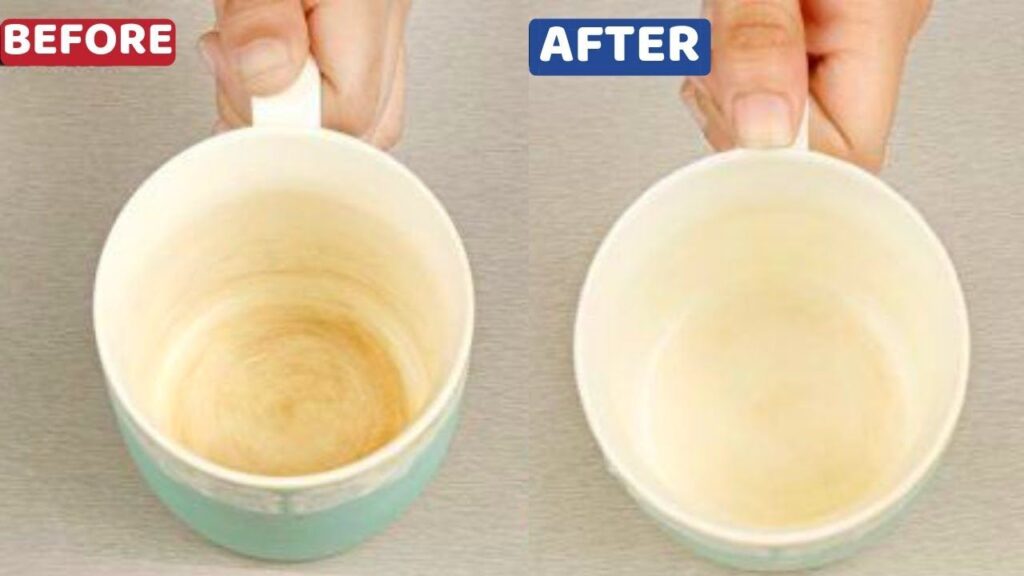
To remove stains from plastic, fill a plastic container with water and add two tablespoons of dishwasher detergent. Allow the mixture to sit for 15-45 minutes, depending on the stain’s size. The stains should easily come off the plastic.
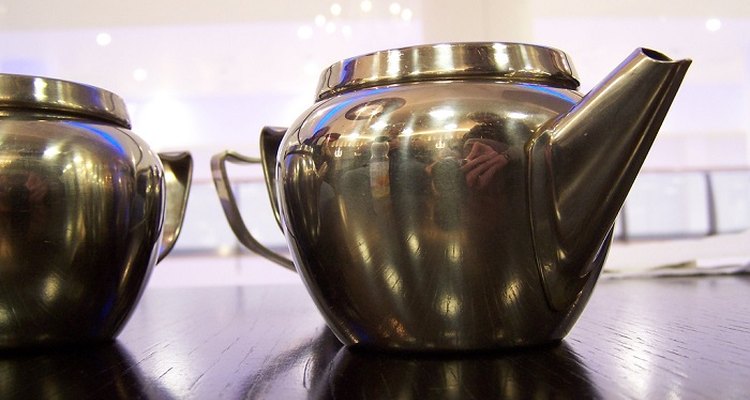
It took some trial and error, but a simple mixture of baking soda and water did the trick. Mix a few tablespoons of baking soda with just enough water to form a paste. Apply this paste to the stained areas and gently scrub with a soft brush or cloth. Let it sit for 15-20 minutes, and then rinse with warm water.
And what about teapot? How to remove tea stains from teapot? A surprising hero in this stain-fighting battle is white vinegar. Fill your stained plastic pitcher or teapot with equal vinegar and warm water. Let it sit for a few hours or even overnight for tougher stains. Rinely thoroughly afterwards. A word of caution: the vinegar smell can be strong, but it will dissipate with a thorough rinse and some time to air out.
Conclusion
We’ve brewed up quite a journey, haven’t we? We’ve covered everything from tackling tea stains on mugs, carpets, and clothes to even our teeth. And remember, the sooner you handle the stains, the easier they are to remove.
Now, it’s over to you. Got any secret tips or tea-stain tales? I’m all ears! If you’ve found this guide useful, why not share it with your friends? Let’s spread the wisdom.
Remember to subscribe for more tea-related tips and tales. Feel free to comment, and remember, the joy of tea lies beyond the stains. Happy brewing until next time!
Thanks for Spiritea Drinks
FAQs
What’s the best household item to remove tea stains?
Many household items, like vinegar, baking soda, and dish soap, can effectively remove tea stains, but the key is to act quickly and adapt the method to the material stained.
How do I remove old tea stains from clothes?
For old tea stains on clothes, try soaking the garment in vinegar or baking soda and water before laundering as usual. Oxidising stain removers, like OxiClean, can also be highly effective. Always check the care label before applying any solution.
Can tea stains on teeth be removed naturally?
Yes, you can lessen the appearance of tea stains on teeth naturally. Regular brushing, flossing, and incorporating natural abrasive foods into your diet can help. However, for more severe stains, you might need professional dental cleaning.
Is it possible to prevent tea stains?
While it’s hard to prevent tea stains entirely, especially on teeth and certain materials like porcelain and plastic, there are steps you can take. Swilling your mouth with water after tea, rinsing out cups immediately after use, and regular cleaning can reduce the risk of staining.
Does tea quality affect how much it stains?
Interestingly, the quality of tea can affect the level of staining. Higher-quality teas have fewer additives and might stain less than cheaper varieties. However, all teas contain tannins, the main culprit behind stains.
Are there types of tea that stainless?
Lighter teas like green or white tea typically stain less than black or herbal teas. This is because they have lower tannin content, the compound responsible for tea’s staining ability.
How does water hardness affect tea stains?
Hard water, which contains high mineral content, can make tea stains more prominent and harder to remove. The minerals interact with the tea’s tannins, creating a more stubborn stain.
Is there a type of cup that tea stains less?
Cups made of stainless steel or glass tend to stain less than ceramic or plastic. However, they all can stain over time if not cleaned regularly.
Can a tea’s colour indicate its potential to stain?
Yes, darker teas, like black and oolong tea, stain more than lighter ones, such as green or white tea, due to higher tannin content.
Does iced tea stain as much as hot tea?
Yes, iced tea can stain just as much as hot tea. The tannins in tea cause stains, and these are present whether the tea is hot or cold.
Are there any tea-drinking habits that can reduce staining on teeth?
Yes, swishing your mouth with water after drinking tea or using a straw can help reduce direct contact with the tea with your teeth, hence reducing the chance of staining.
Does adding milk to tea reduce its potential to stain?
Some studies suggest that adding milk to tea can reduce its staining ability. The casein protein in milk can bind with tannins, preventing them from staining.
Can green tea stain my teeth?
Yes, while green tea might stain less than black tea, it can still cause stains over time due to its tannin content.
How can I prevent tea from staining my teapot?
Regular cleaning can prevent tea stains. After using, rinse the teapot with hot water and let it dry. For accumulated stains, baking soda and water paste can help.
I’m Shanna, creator of Spiritea Drinks. I’m all about teaching people to grow their own food, tea, cook what they harvest, and eat with the seasons.

